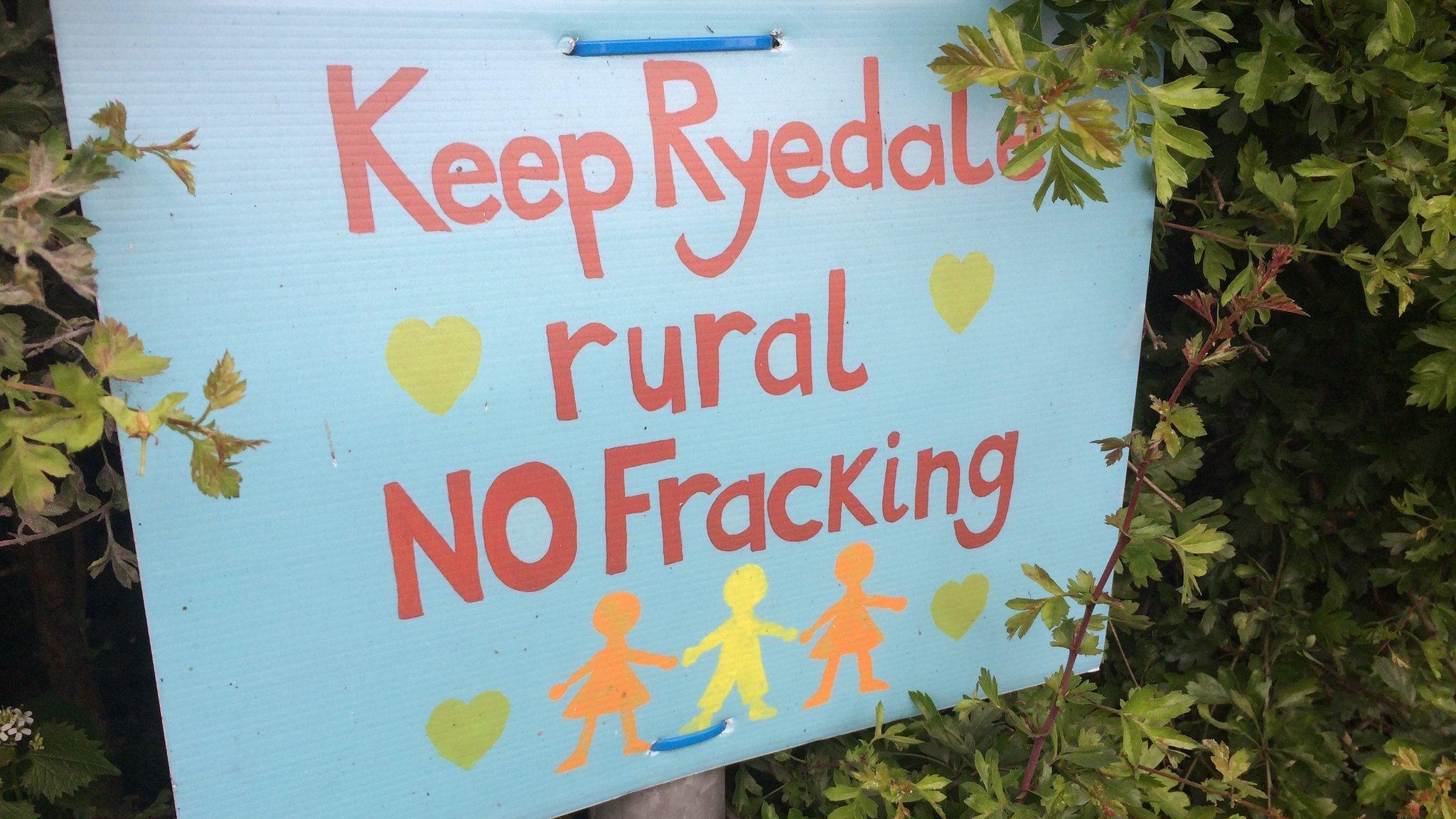Fracking go-ahead: What happens next?
- Published
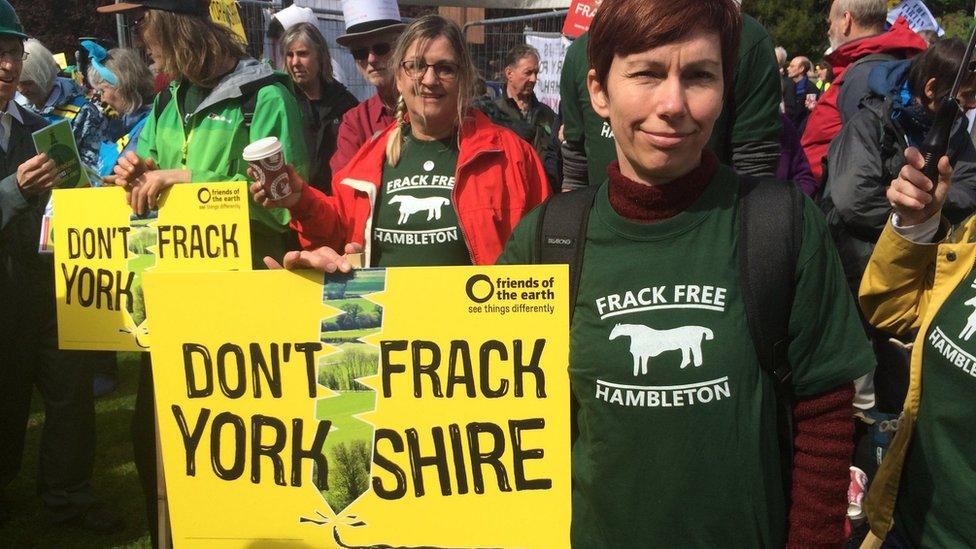
Campaigners say they are considering a legal challenge
Plans for fracking in England are being prepared in the wake of the decision made in North Yorkshire earlier this week.
Brownfield sites and areas near motorway junctions could be used for future shale gas production.
On Monday North Yorkshire County Council approved an application by Third Energy to frack a well near the village of Kirby Misperton in Ryedale.
Campaigners say that they are still considering a legal challenge.
'Further applications'
The North Yorkshire decision is a landmark moment for the UK's fledgling shale gas sector. It is the first time a company has been given go-ahead since a moratorium on fracking was lifted in 2012.
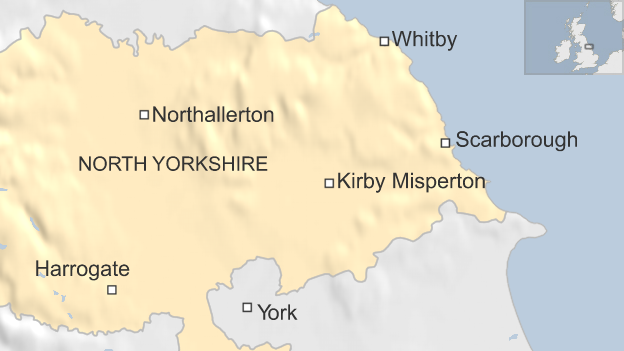
"The decision in North Yorkshire was an important first step and underlined our firm belief that the process is safe and can be done environmentally sensitively," says Ken Cronin of the industry body UKOOG.
"We expect further applications and this chimes well with the need to provide a home-grown source of gas to heat our homes."
And firms are stepping up their exploration plans.
This week the largest independent operator of onshore oil and gas fields in Britain, Igas, said that it would drill two exploratory shale gas wells in Nottinghamshire early next year, subject to planning and permitting.
It says it could apply to use fracking at one of the sites near the village of Misson if exploratory drilling is successful.
It will also be applying to frack in the North West of England. The company previously drilled wells at Barton Moss near Salford and at two locations in Cheshire.

The chemicals giant Ineos has also confirmed plans to undertake large-scale 3D seismic surveys of its licence areas in Cheshire, Derbyshire and North Yorkshire, to help select exploration sites.
Ineos says it is the biggest UK shale player with access to one million acres of potential shale gas reserves.
Plans by the shale gas firm Cuadrilla to drill and frack wells at two sites in Lancashire were the subject of a planning inquiry earlier this year.
A report and recommendation by the inquiry's planning inspector will be submitted to the government by 4 July. It will then be up to the Communities Secretary, Greg Clark, to decide whether to approve the plans.
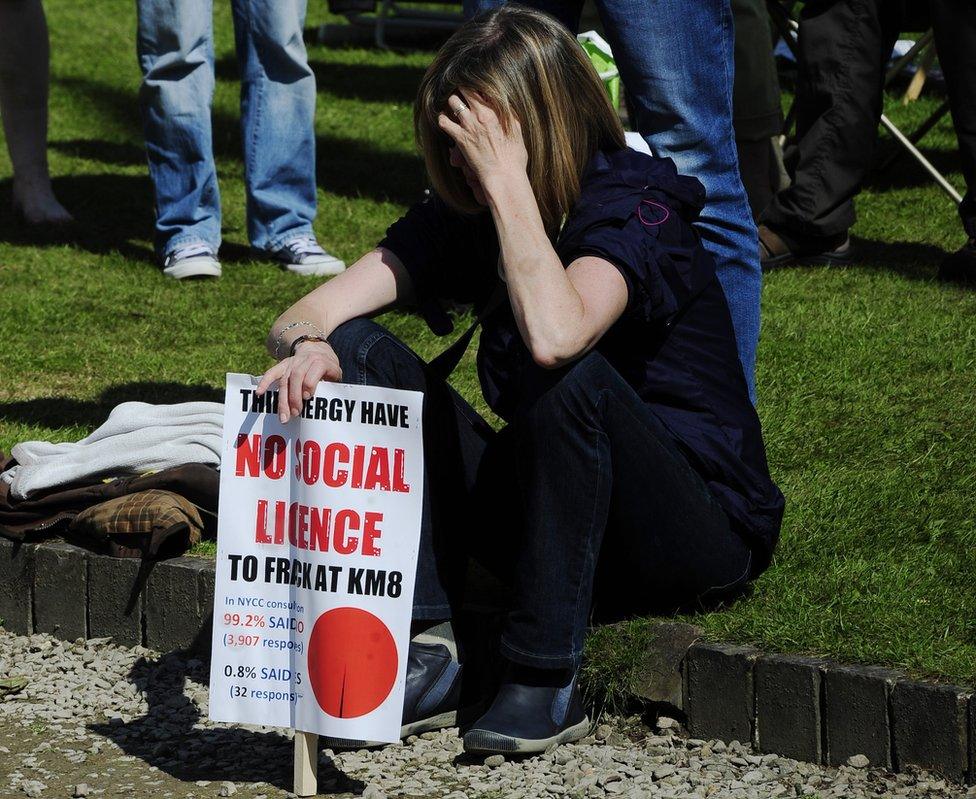
Protestors reacted with dismay after the decision was announced
Existing well
Some anti-fracking campaigners fear the North Yorkshire decision sets a precedent making it easier for other councils to approve fracking.
But aspects of Third Energy's application meant it always stood more chance of approval.
Crucially, the location is an existing industrial site where gas has been produced since the 1990s.
This contrasts with the proposals by Cuadrilla in Lancashire, which were rejected by councillors, involving two greenfield sites.
Cuadrilla also proposed months of work involving drilling four horizontal wells on each site which would then be fracked.
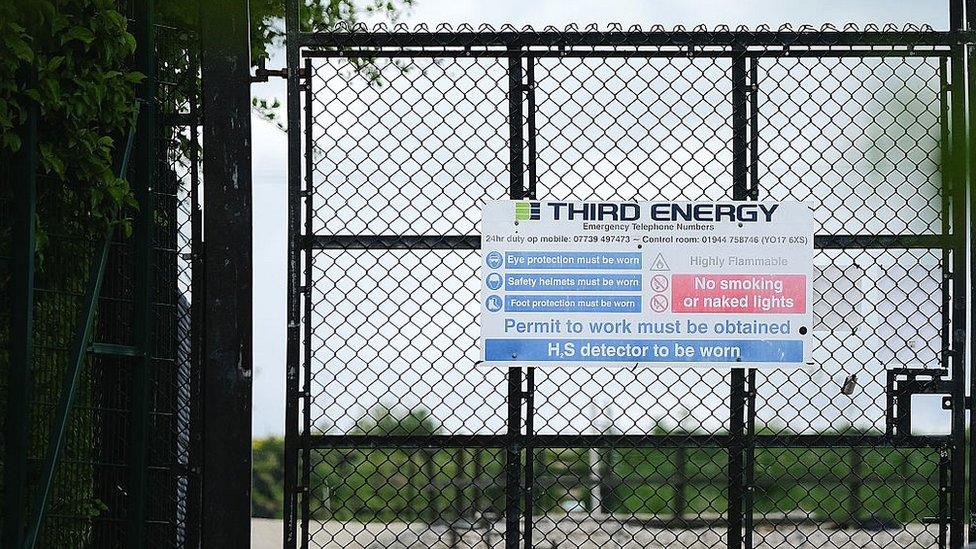
The North Yorkshire decision is a landmark moment for the UK's fledgling shale gas sector
The Third Energy plan will be completed within eight weeks and involves fracking an existing vertical well drilled in 2013.
'Where the geology takes you'
But the Third Energy decision shows that planning approval may be easier on existing industrial locations.
"If we can find sites that have the minimum impact on the local environment and the local community we will," says Ann-Marie Wilkinson, director of corporate communications at the onshore oil and gas firm, Igas.
"But ultimately you go where the geology takes you," she says.
Some in the industry believe there could be huge potential for fracking in the longer term on disused land in former industrial locations.
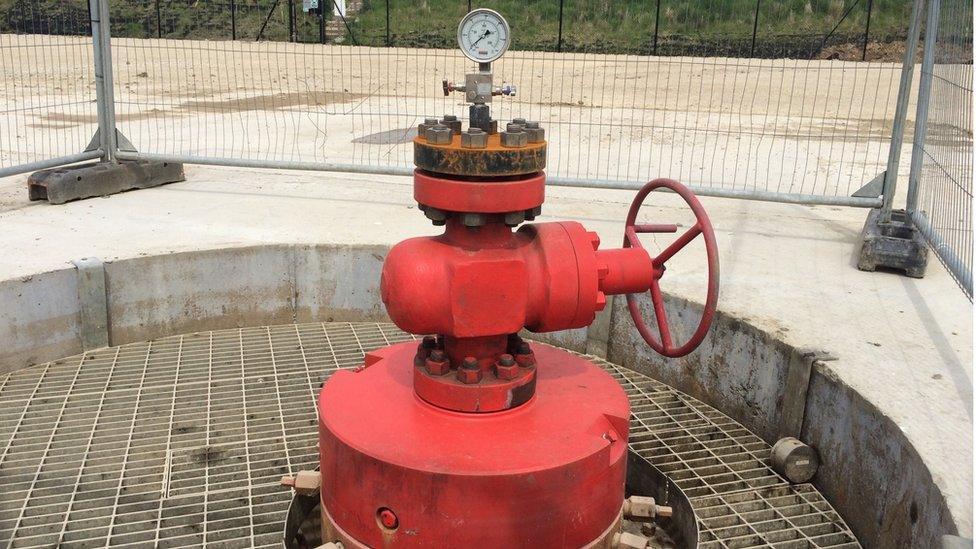
The well head at Kirby Misperton
"There are a lot of industrial sites that will be used for shale gas," says Graham Dean, from Aberdeen-based oil and gas firm Reach CSG.
"Nearly every motorway junction has an industrial estate adjacent. These would make excellent sites for shale gas production."
Many prospective shale gas areas are in former industrial and mining regions, and with deindustrialisation many now have wide open spaces that could be shale gas sites, says Mr Dean.
"An example is the Tata Steel sites in Scotland which have a lot of empty land around them that could have shale wells providing the fuel to keep steel production going."
It is a view shared by a source at another firm with onshore exploration licences.
"We will look for places that work for us and the local community. Old industrial sites fit that bill as they have the existing infrastructure."
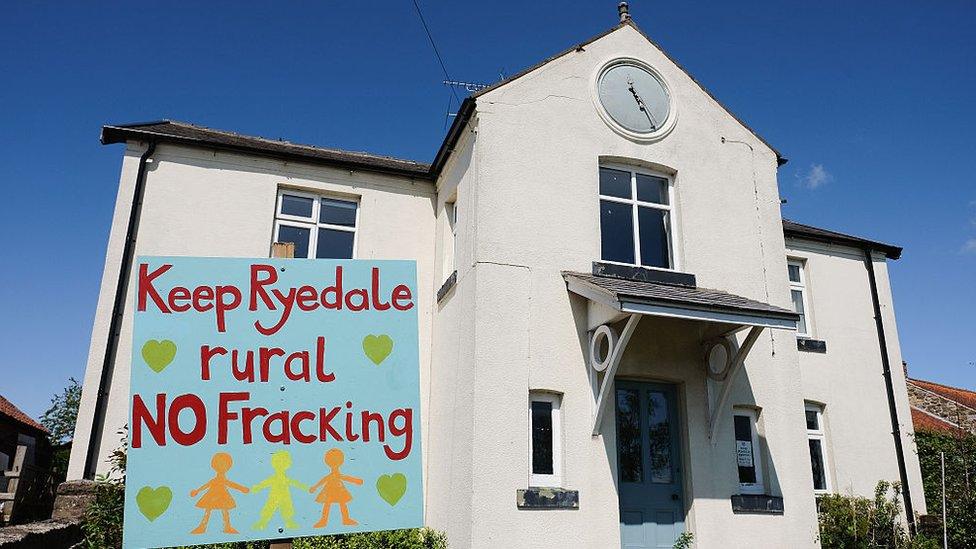
The Third Energy decision highlights that planning approval may be easier on existing industrial locations
Legal challenge
Campaigners are still assessing the legal grounds for challenging the North Yorkshire decision. "We are considering legal action," says Donna Hume of Friends of the Earth.
"For fracking to be economically viable or contribute anything significant to our energy supplies, it would result in large-scale countryside industrialisation, with hundreds of wells in Ryedale alone," she says.
"Given the scale of public opposition and the response of the community in North Yorkshire, this is very unlikely to happen; nor should it when the UK needs to move to clean, renewable energy to fight climate change."
Follow John on Twitter, @JohnMoylanBBC, external
- Published24 May 2016
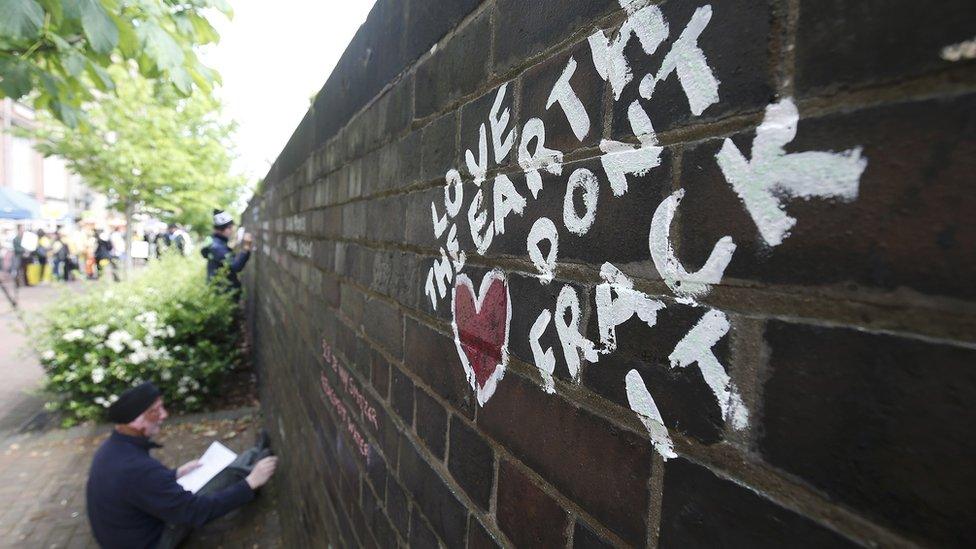
- Published23 May 2016

- Published23 May 2016
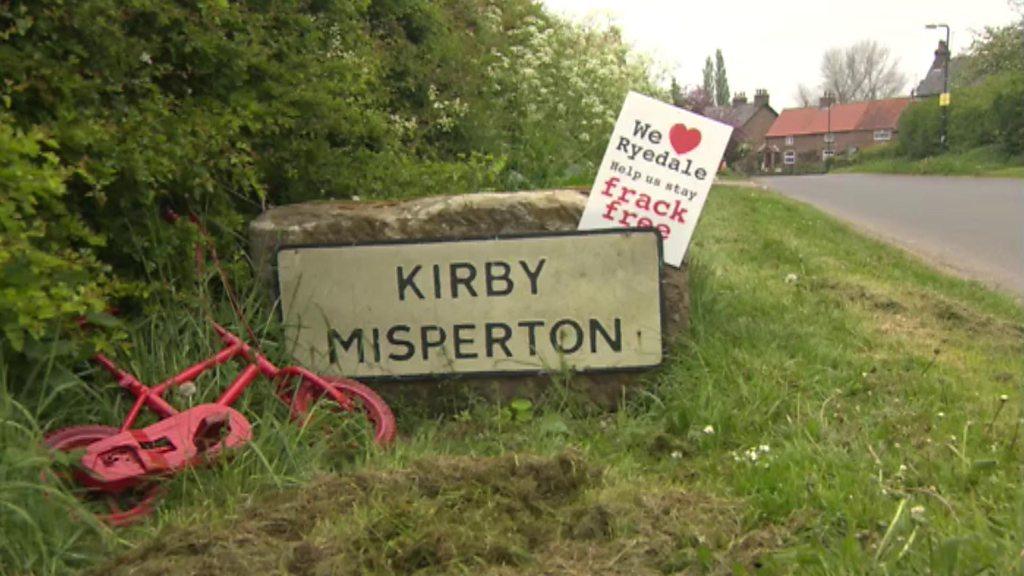
- Published23 May 2016

- Published20 May 2016
